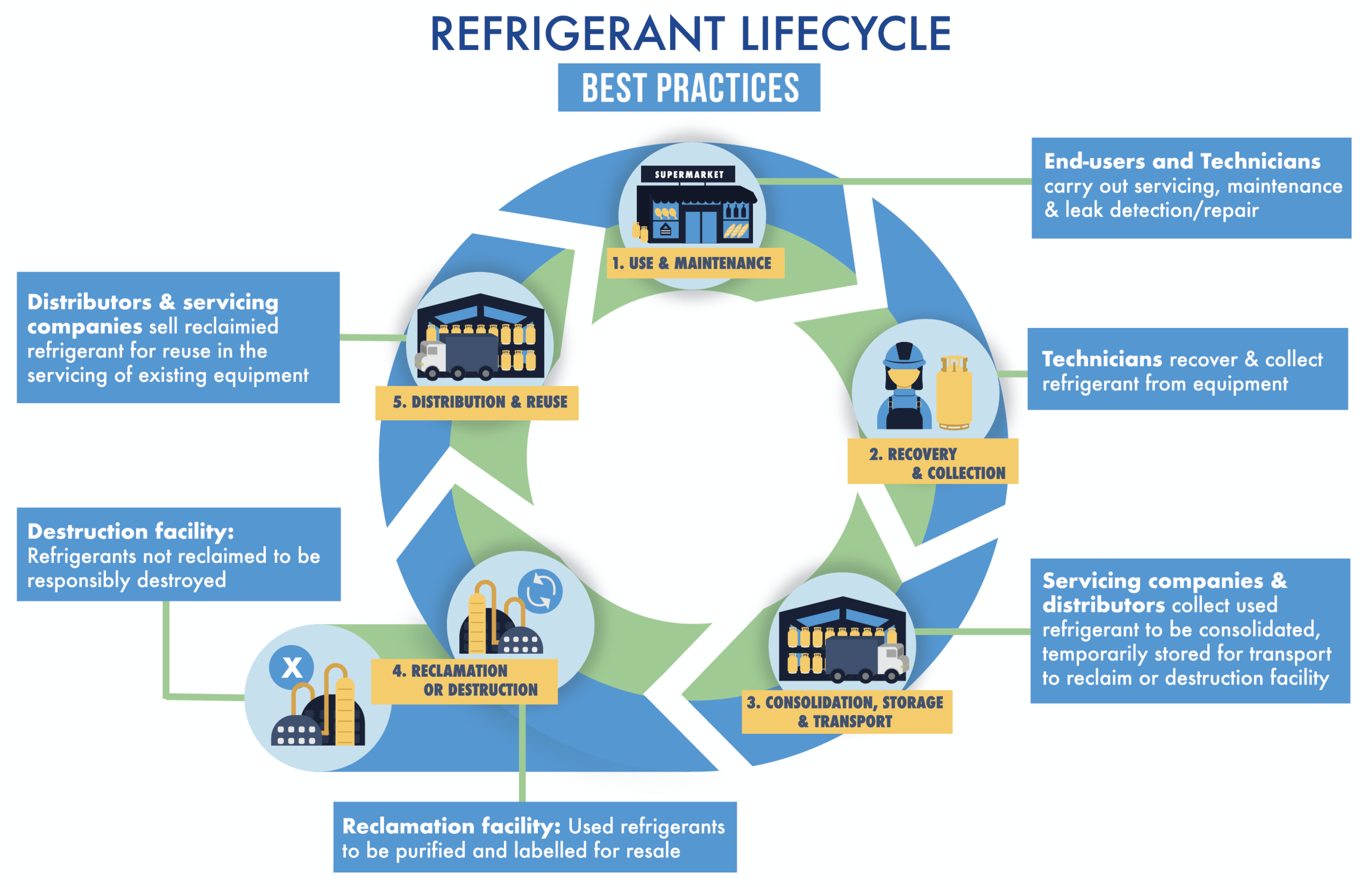Actions
Refrigerant Management
Reducing Leaks
By employing best practices to prevent, detect, and repair leaks, retailers can reduce their corporate leak rates from the sector average of 25% down to less than 10%. Reducing refrigerant leaks rates to the EPA’s GreenChill Partnership corporate average of 13% across the entire sector can reduce annual US emissions by 16.3 million metric tons of CO2 equivalent in 2030, while also reducing costs. Reducing a typical store's annual emissions rate to the EPA’s GreenChill Partnership average saves $4,000 per store each year due to reduced servicing and refrigerant costs. Following best practices in refrigerant management and servicing including reducing leaks can also improve energy efficiency significantly, curtailing up to half of increased energy use of equipment over its lifetime.
Leading supermarkets can:
Set targets and strategies to achieve an average corporate leak rate under 10%
Install automated leak detection on large refrigeration systems or conduct regular inspections
Use software or other electronic system for tracking refrigerant use, leaks, and repairs
Publicly disclose their corporate average leak rate on an annual basis
Reclamation and Destruction
Leading supermarkets should ensure all refrigerants removed from systems are properly recovered and either reclaimed or destroyed, in order to avoid refrigerants being vented into the atmosphere at their end of life. Destroying HFCs retired from a single supermarket system containing 3,000 pounds of HFC-404A at end of life mitigates over 5,000 metric tons of CO2 equivalent emissions.
Leading supermarkets can:
Work with vendors to ensure all refrigerant recovered from systems is either reclaimed or destroyed
Ensure servicing technicians are trained in proper recovery techniques
